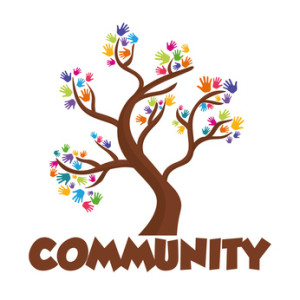 Have you ever considered community association living similar to belonging to a club? And just like belonging to a club, for those who live in a community association, membership is required. Once you receive your copy of the rules and regulations and the invoice for the annual dues you are a member of the association, a member of the club. If you are amenable to community association living this may be a good choice for you. As a member your common elements will be attended to which may include paying your cable bill, landscaping the property around your home and overseeing maintenance of the community clubhouse by your management company. For others who prefer a bit more autonomy in and around their property, association living may not be the right choice for you. You may not want someone telling you what color you can paint your home, where you are permitted to plant a flower bed or allow or deny you solar panels installed on your rooftop.
Have you ever considered community association living similar to belonging to a club? And just like belonging to a club, for those who live in a community association, membership is required. Once you receive your copy of the rules and regulations and the invoice for the annual dues you are a member of the association, a member of the club. If you are amenable to community association living this may be a good choice for you. As a member your common elements will be attended to which may include paying your cable bill, landscaping the property around your home and overseeing maintenance of the community clubhouse by your management company. For others who prefer a bit more autonomy in and around their property, association living may not be the right choice for you. You may not want someone telling you what color you can paint your home, where you are permitted to plant a flower bed or allow or deny you solar panels installed on your rooftop.
How to Avoid Conflict
In any club, regardless of its affiliation, members have a variety of personalities and preferences, this is human nature. Consider if you will a community population that varies from 10 to 1,000 units or more and then attempt to please all of those residents all of the time. This is quite a daunting undertaking and essentially impossible to achieve even with the greatest effort and the best of intentions. Can you please all the people all of the time? No. So how does property management or an association Board proceed in making decisions for the betterment of the community and avoid conflict with association members?
Remember the Member
Mike Storkey is the current President of Toastmasters International, a nonprofit organization specializing in communication and leadership development. Mr. Storkey has been credited for the inspiring tag line “remember the member.” Although he is specifically addressing his global community of Toastmasters, these three simple words apply to any and all clubs and club membership including community associations.
With a membership of 345,000 and 15,900 clubs in 142 countries the following question was asked of Mr. Storkey: How do you benefit the members of a global organization? In his response he effectively whittled down his answer to two considerations. First, consider how decisions may effect members of different cultures. Second, keep the decision making process focused on benefitting the majority of the members. To the advantage of an international organization the Toastmasters Board is comprised of a variety of members who can offer differences of perspective, this being a benefit of clubs located around the world including but not limited to the United States, Africa and Australia to name a few. But how does this translate to a condo in Naples, Florida or an HOA in Houston, Texas?
Apply the same two steps. When the opportunity arises to speak at an Annual Board Meeting, whether you are a board member or not, consider your position on the issue and how it will effect the majority of community members. While human nature tends to focus on what is in one’s best interest, in this scenario take a step back and think of your neighbors. When the time comes and you receive the notice of the annual meeting along with your proxy think about the structure of and who is on the Board in your community. Has the Board been effective? Has the Board recently changed hands? Or are the same people seated in the same position year after year? Are you happy with how your community is being run? If you answer “no” to any of these questions then now might be the time to step up!
Run for a position on your Board. If you cannot or do not want to take on this task then speak with your neighbors, perhaps someone will step in and shake it up if it’s for the betterment of the community and its members. While this might appear easier for a global organization, the structure of your community association is similar, just on a different scale. And always “remember the member.”
Mr. Storkey was featured and interviewed in The Toastmasters Podcast which aired on September 13, 2016. Excerpts from that podcast are made reference to in this article.


